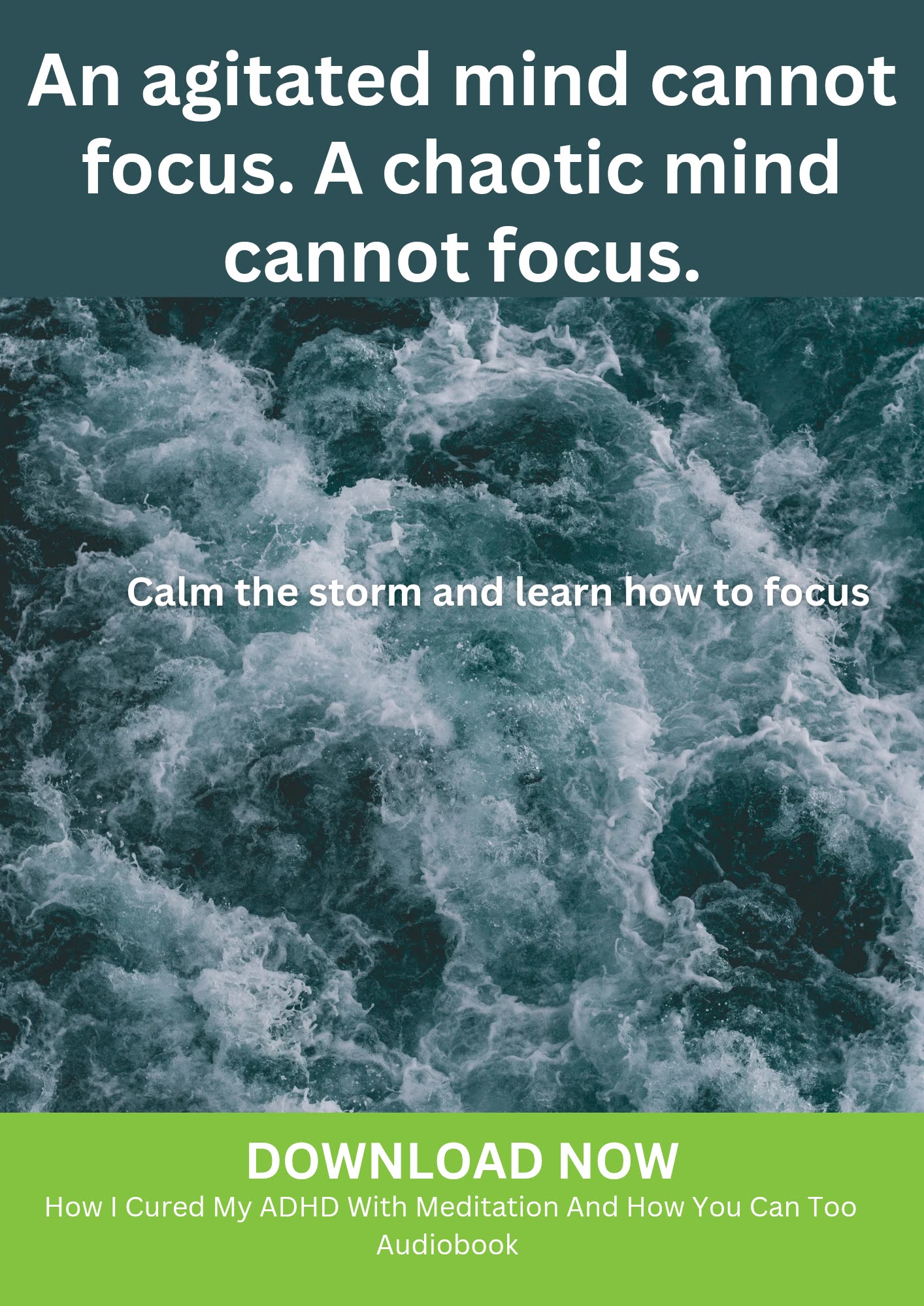Path to Peace with Todd Perelmuter Newsletter
In this article, I’ll explain in just 6 easy steps how you can build self-discipline with meditation. Despite all of the remarkable technology at our fingertips, our society seems busier than ever.
But these days, more and more super successful people are learning that spending a little time tuning out helps them be more self-disciplined so they can perform at their best.
Physically speaking, nothing. Everything he has within him, you have. Everything he achieved, you could achieve.
But he has one trait in particular that has been the key to his success – self-discipline. Because of his self-discipline, he manages Square Inc and Twitter Inc, all while juggling congressional hearings and serving on the board of directors for Disney.
Besides being an Academy Award-nominated actor, Mark Wahlberg runs several businesses, works out for 2.5 hours 5 days a week, and still has time to take his kids to school. How does he do it? Self-discipline.
Similarly, Dwayne “The Rock” Johnson went from college football player to professional wrestler, to one of the highest-paid actors on the planet.
He wakes up at 3:30 am, works out 6 days a week, and he makes 3 movies and a TV show per year! Can you smell how the Rock does it? Yup, self-discipline.
How Do They Have So Much Self-Discipline?
So, besides self-discipline, what do these three guys have in common? You guessed it again – they use meditation (Get started here) to build self-discipline.
Despite their incredibly busy and successful lives, each of these people starts their day off with a morning meditation to help them focus, prioritize, process their thoughts, and prepare themselves to take on the day.
Jack Dorsey meditates for two hours every single morning. He does Vipassana mindfulness meditation and credits it for his energy, focus, happiness, and clarity of thought.
Mark Wahlberg calls it his daily prayer, where from 2:45 to 3:15 am he thinks about those who are less fortunate, what he’s grateful for, his responsibilities, and what he needs to focus on that day.
For Dwayne “The Rock” Johnson, he calls it his two hours of quiet time, where from 3:30 to 5:30 am he can “really just shut off my brain.”
He has found that he can sacrifice the extra two hours of sleep because the meditation gives him a deeper, more restful experience that will keep him highly energized throughout the day.
Why is Self-Discipline Important?
Self-discipline is the most important factor that separates successful people from unsuccessful people. This applies to every aspect of our lives, whether it’s personal fitness, financial success, or success in our relationships.
When we’re lazy, our lives fall apart. When we take on tasks and challenges with energy and excitement, our lives become richer in every way.
When we see doing what needs to be done as a chore, we procrastinate and avoid them. When we see them as opportunities, we dive right in. The best way to get doing is to take a few moments to do nothing.
When you’re constantly drained, when you’re always mentally exhausted, everything seems hard. When you give your mind a rest regularly, everything flows easily and naturally.
The Art of Gratitude
A film takes viewers on a journey back to the natural gratitude we all have inside us.
Why Does Meditation Help with Self-Discipline?
When we meditate, no matter what else is happening in our lives, we can recenter our minds, find balance, recharge, and ready ourselves to take on whatever comes at us.
Meditation gives us the vital time we all need to process our thoughts and emotions, to become present and focused, to act out of serene wisdom rather than irrational fear.
The world can be daunting. With global issues and problems in our personal lives, every day can feel like it’s grinding us down. If we don’t take a little time every day to process and heal from yesterday’s difficulties and stresses, we can get crushed.
Getting crushed by our worries, anxieties, and stressors can take on many forms: depression, addiction, chronic pain and illness, anger and frustration, impatience and short-tempered, as well as any number of other mental health conditions.
It’s more important than ever to take some time every day to release those negative emotions and recharge so we can take on the day and perform at our best.
6 Ways Meditation Helps Build Self-Discipline
1. Focus
First and foremost, meditation trains the mind to focus. By focusing on your breath, a mantra, your body, or something else, meditation is all about focus.
When we get distracted, we don’t finish projects, or we finish them poorly. Through meditation, we train the muscles in our mind responsible for focusing.
The more we meditate, the more we practice focusing. Whenever we get distracted or lost in thoughts, we just gently bring our attention back to the object of our focus.
Once you learn to be able to focus on something as boring as your breath with the same level of attention you give to your favorite movie, you will be able to literally focus on anything you set your mind to
With this new level of heightened focus and concentration comes new levels of peace and tranquility. Deep focus is a state of deep peace and trance-like tranquility. There is no thought in this state, only awareness, and observation without judgment or mental labeling.
2. Organize
In meditation, until you’re a zen master living in a cave, thoughts will continue to come and go. What’s important is allowing them to do so without resistance and without getting lost in thoughts.
When the thoughts come, observe them. Observe the nature of them. Don’t follow them down the rabbit hole of compulsive, habitual, unconscious thinking.
Rather, observe them and then bring your mind back to the present moment and return your focus to your breath, body, or mantra.
By doing this, problems in your life may come into your mind, but it is by clearing the mind that we allow space for solutions to present themselves.
In this way, meditation helps us organize our thoughts, process our thoughts and emotions, and think clearly about what we need to do and when we need to do it.
3. Prioritize
In giving ourselves time to process our day, our thoughts, and our emotions, we’re able to see what things truly matter.
We give ourselves time to think through what needs to be done most urgently and what things can be done later.
Then, we can go and do those most important things with ease, joy, and purpose.
4. Visualize
Professional athletes, like Tom Brady, have spoken about how they use visualization to perform better at their sport. Before a game,
Tom will visualize every second of the game coming up. He’ll see himself in his mind playing perfectly, executing perfectly, and winning.
Visualization, much like physical training, creates muscle memory in the mind. By visualizing your day going perfectly well, by sitting down with your eyes closed and seeing every detail of an important meeting play out, you are laying down the neural pathways in your brain to perform exactly how you see it beforehand.
In football or gymnastics, things happen very quickly. By using visualization, athletes are able to react more quickly when competing.
This is just as true in the boardroom when you need to think fast and anticipate what other people will say. Meditation provides the perfect opportunity to spend a few minutes visualizing important moments in your day.
5. Let Go
As we focus on our mind, for brief moments we are able to pause our normal stream of thought. The more we continue practicing meditation, the longer and more frequent these moments become.
This letting go of our normal, constant thought pattern lets our mind rest, helps us reach deep levels of peace, and in so doing we are more easily able to let go of things that bother us over which we have no control.
In moments of presence, what weighed us down no longer weighs us down. We forgive, we heal, and we set down whatever baggage we’ve been holding onto.
6. Get Going
Now that you’ve mentally prepared for your day, you’re ready to tackle it. Meditation is not about the few minutes you meditate. It’s about the rest of your day and the rest of your life.
The uniquely restful state meditation provides for your body and mind leads to greater energy and clarity throughout your day. Productivity goes up, blood pressure and stress go down, and joy and sense of fulfillment are increased.
After consistently practicing meditation in the morning, every day will be faced with boundless energy, determination, focus, and discipline.
How to Build Self-Discipline with Meditation: 6 Steps
1. Choose Your Self-Discipline Meditation Technique
There are many different types of meditation and different people prefer different methods.
Some people like to use a mantra, others like to focus on their breath, and others like to turn their focus to their body.
All three of those meditation methods are excellent for increasing focus and self-discipline. Methods such as guided meditation are a little too easy, unfortunately.
They do not increase our self-discipline, however, they can be very relaxing and pleasant. Relaxation is an important element of mental health and guided meditation can have many benefits, but self-discipline just isn’t one of them.
2. Schedule It Into Your Daily Routine
If you don’t have the time to meditate, take the time. Everyone can make time for anything that’s important to them.
And when it comes to meditation, people report needing less sleep, being more focused and present, and being more productive throughout the day.
It doesn’t cost you anything; it’s an investment in your life that pays off handsomely. It’s like turning every minute into two minutes.
Without a consistently scheduled meditation practice, the chances of it sticking are more unlikely. Pencil it in somewhere and do it.
First thing in the morning is the time most people report being able to do it consistently because distractions and emergencies haven’t started popping up yet upon first awaking.
3. Stick to It Everyday
Being self-disciplined in your meditation practice will lead to build self-discipline meditation in every aspect of your life.
No matter how much you don’t want to meditate, do it! This will train that sticktoitiveness muscle in your mind as well.
The more you stick to it, the more your mind becomes comfortable with sticking to and completing difficult tasks.
Not only that, but meditation practiced daily will build self-discipline upon itself and every day the benefits will grow and grow.
4. Slowly Increase the Time You Meditate
Usain Bolt wasn’t the fastest man alive the day he started walking. Just like him, you most likely won’t meditate like the Buddha on your first try. That’s ok. Good things take time and patience.
Let go of your expectations and don’t be too hard on yourself. In Buddhism, they call it taking the middle path: don’t be too lazy and don’t go so crazy that you burn out. Life is a marathon, not a sprint.
If a few minutes of meditation is something you can stick to, start with that. Maybe add 30 seconds a day, or a few minutes each week. Go at your own pace and listen to yourself.
Don’t, however, try it your first day, think it’s just too hard, that it’s just not for you, and give up.
That’s not you talking, that’s your egoic mind clinging on for dear life. The ego likes entertainment and distraction, instant gratification, and complaining.
The ego, thanks to modern technology, has been programmed to have a microscopic attention span. It’s impatient. But that is not who you are.
Do you think if you were born 20,000 years ago that you’d have ADD or feel the need to check your phone every five minutes? Of course not.
So just be patient, observe your thoughts, but don’t listen to them or identify with them. You are not your thoughts. The more you realize this, the less power negative thinking will have on you.
5. Gradually Advance to More Challenging Types of Meditation
Key step to build self-discipline to meditation is using mantras in your meditation is generally considered easier than observing the breath or the body. It’s a great way to begin as you focus on your mantra, such as “Om,” and repeat it silently in your mind.
Once you work your way up to 20 minutes, you can try switching to breath meditation. Over time, you might be able to work your way up to 30 minutes, twice a day.
After that, you can try body scanning, where you move your focus up and down your body as if there is an invisible grid that your consciousness is moving along.
But take your time. There’s no rush. Doing whatever amount you can stick to is always the right amount.
6. Over Time Proceed Towards More Traditional Meditation Postures
When you begin, sit however is comfortable for you – in a chair, in bed with your head propped up with a few pillows, sitting on the ground. Whatever is relaxing for you.
As you progress, you can try working your up to sitting on the floor without back support, in a lotus or half-lotus-pose. This is also known as the Indian style.
The muscles and discipline you develop from sitting in ever-increasing postures will extend to how you approach everything in your life. Meditation is just a microcosm for the rest of your life. If we practice it with discipline, we will develop discipline.
Don’t Just Be Materially Wealthy, Be Spiritually Wealthy
Join the Path to Peace with Todd Perelmuter
Are you carrying on your shoulders the baggage of guilt, shame, regrets, grudges, resentments, past mistakes, failures or trauma? Are you unable to let go of the past or your worries about the future? Are the stress and pressure you put on yourself weighing you down? Are you chasing after a happy life but still haven’t found it yet?
The book, The Way Out of Suffering, will help you put that baggage down, let go of the past, and move forward in this perfect and peaceful present moment.




